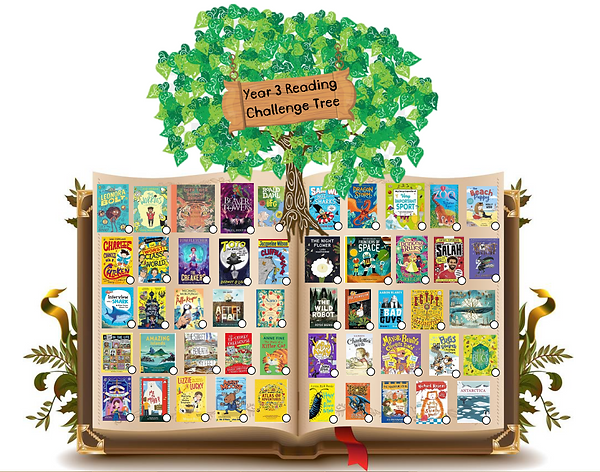
Reading & EARLY READING
a vital skill that supports children’s learning across the whole curriculum.
At Shield Row Primary School, reading is promoted as an intrinsic part of teaching and learning.
The ability to read is not only the key to learning but it also has a huge impact on children’s self-esteem and future life chances.
As a school, we will ensure that our children are taught to read with fluency, accuracy and understanding through a variety of discreet and cross-curricular learning opportunities.
Above all, we want children in our school to become enthusiastic, independent and reflective readers.
We want our children to fall in love with reading so that it brings them pleasure and allows them to experience new things, discover new worlds and explore the emotions of others.
In EYFS and Key Stage One the children are taught to read and write following Teach Hub Phonics Letters and Sounds programme. This programme teaches children to decode (break down) words into their smallest units of sound (phonemes) systematically.
In the Early Years, teachers use actions and songs for each sound to help the children remember the letter shape, name and the sound it makes. This is particularly important for kinaesthetic learners (children who learn by ‘doing’).

Phonics
We follow the Teach Hub Letters and Sounds programme for phonics. Our phonics curriculum takes children through six Phases, with children typically moving through Phases 1-4 during EYFS, and then onto Phase 5 and 6 throughout Year 1 and 2.
With lots of repetition and weekly development of skills, we find that we are able to really build confidence and challenge children at an appropriate level.
Phase 1
The focus is on listening and making sounds with mouths and bodies—e.g. environmental sounds, rhyme, rhythm, alliteration and early letter recognition.
Phase 2
Each week, children learn single letters and their corresponding sounds in a useful order (e.g. SATPIN) so that they can begin to blend and segment short words.
Phase 3
Phase 3 introduces ‘friendly letters’ letters (where two letters make one sound, e.g. ai, oa, sh). Skills in blending and segmenting are further developed.
Phase 4
This phase is an opportunity to recap all Phase 2/3 sounds in a range of contexts. Children begin to read and write 2-syllable words and words where two sounds are close together (e.g. s-l-i-p / p-l-ay / f-r-igh-t).
Phase 5
Tackles the complexities of spelling in English and teaches children to explore alternative spellings and pronunciations for all sounds (e.g. all different spellings of /ay/). They will learn how to apply a ‘best bet’ rule (e.g. /oi/ in the middle, /oy/ at the end) and will begin reading and talking about suffixes.
Phase 6
Children begin to tackle grammatical rules for the spellings when writing tenses, adding suffixes and prefixes, contractions and strategies for spelling tricky words.
Phonics in Reception - Overview of Teaching
Phonics in Year 1- Overview of Teaching
We support children in using their phonics to support spelling from Reception to Year 6 using 6 different Phonics and Spelling Charts. Here is a sample of these resources:




Reading in Early Years
Reading is a high priority within Early Years and underpins everything we do. This includes making sure topics taught are built around a wide selection of books linked to children’s interests.
In Nursery, the importance of reading starts as links are established through the weekly lending library, known as Dream Reads - where children are given a book to take home and share with their adult/s.





One of the core priorities of our school is to encourage reading for pleasure.
Each half term, in Nursery and Reception, we have chosen five books for the children to listen to, engage with, discuss, retell and enjoy. In Nursery the books have strong rhyme or repeated refrains, repeated patterns, familiar authors and a wide range of vocabulary. This continues into Reception, where some of the authors introduced in Nursery are then picked up again.
The children in Reception are exposed to different types of stories; traditional tales, books with repeated refrains/rhyme, books linked to diversity, well-being and PSHE themes as well as a number of books that we believe the children just need to be introduced to.
Across their two year journey in our Early Years, the children will become familiar with and know, 60 high quality texts. By providing the children with a wide range of books, varied in genre and style, we hope to embed the skills required to broaden depth in speech and language whilst also enhancing an understanding of story patterns and sequential narrative.
Nursery and Reception - Favourite Five Overview
Sample:
In Year 1 we continue to send home a weekly Dream Read to ensure all of our pupils are being exposed to a range of stories and promote book talk at home.
Y1 Dream Reads Downloadable Overview
In Y2-Y6, the children can access our Challenge Reading Trees. Each tree offers 50 books - a range of fiction, non-fiction and poetry - and children are challenged to see how many of the books they can read!













Downloads
The download links below provide a wealth of information to help support your child's reading.
Bronze Level - Bronze Reading Certificate and Reading sticker
Silver Level - Silver Reading Certificate and Shield Row Primary bookmark
Gold Level - Gold Reading Certificate and Super Star Reader badge
Once their sticker chart is full, they will be able to visit the Reading Rewards Cabinet and select a book which will be gifted to them from school.



Dream reads for Reception
High Frequency words with highlighted tricky words
Overview of Letters and Sounds
OVERVIEW OF PHONICS IN RECEPTION
Phonics and spelling charts Reception to year 6
phonics information for parents
developing your child's reading skills

